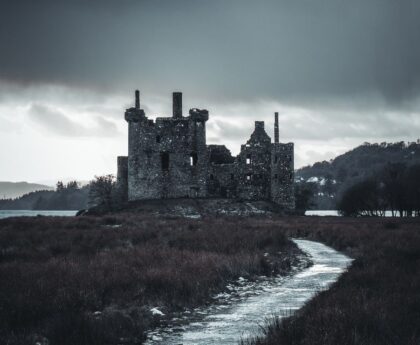The Cinematic Encounter of Agnès Varda and Pier Paolo Pasolini
Agnès Varda and Pier Paolo Pasolini: A Revolution in Cinema
The 20th century witnessed the rise of numerous pioneering filmmakers who forever changed the trajectory of cinema. Among these luminaries, few can match the influence of Agnès Varda and Pier Paolo Pasolini. Through their groundbreaking works, such as Varda’s “Vagabond” and Pasolini’s “Teorema,” both directors revolutionized the cinematic medium and paved the way for innovative artistic expressions across generations.
While there are intriguing intersections within their filmographies concerning philosophical subjects like the relationship between art and reality, the most captivating interaction between these two giants of cinema was an actual conversation captured on film. In 1967, Varda filmed 16mm footage of Pasolini walking through the streets of New York City during his visit to present his masterpiece, “The Hawks and the Sparrows,” released the previous year. Shot on 42nd Street, Varda’s vision of the city epitomizes her unique visual language, transcending the mundane to create a contemplative and ethereal experience.
In this extraordinary footage, the camera alternates between focusing on Pasolini’s pensive presence and capturing the bustling city life around him. As one would expect in any depiction of the legendary urban center, the frenzied energy of New York City emanates from the screen, enveloping the viewer in its atmospheric embrace. Pasolini’s musings add another layer to the experience, blurring the boundaries between reality and fiction. He asserts, “There’s no difference between reality and fiction because cinema is reality expressing itself through itself.” For Pasolini, filming a person unaware of being recorded is reality, while using an actor is an alternative reality – both integral parts of the cinematic experience. Pasolini’s approach to actors is unorthodox, as he insists on capturing them as they are rather than having them embody roles contrary to their true nature. This belief reflects his conviction in cinema as an audio-visual reality, where dialogue becomes an integral part of the image.
A Glimpse into Pasolini’s Complex Relationship with Religion
During the conversation, Pasolini is asked about his conceptualization of Christianity, to which the director responds with candor. He admits, “My relationship with religion is so dark, I can’t talk about it.” Pasolini’s personal connection with religion is rather enigmatic, and he reveals that his film education is not rooted in traditional cinema but is instead more figurative. He explains that his cultural references are not images of Christian religion, but rather Italian paintings. This revelation sheds light on Pasolini’s artistic approach, which is deeply influenced by his aesthetic obsessions. While he acknowledges his obsession with aesthetics, he also demonstrates a painter’s love for his craft, offering a unique perspective on the framing of his cinematic images.
A Time Capsule of Artistic Brilliance
The recently discovered short documentary, filmed by Varda and featuring Pasolini in New York City, serves as more than just a portrait of the renowned director or the bustling metropolis. Varda, as a titan of the French New Wave, possessed an extraordinary ability to infuse her art with something greater, transcending the boundaries of the individual subject matter. Thus, this obscure compilation of fleeting images and dissolving ruminations becomes a captivating time capsule that seems to contain the essence of the entire universe within its frames.
The footage, rescued from Varda’s personal archives and made available for viewing, offers an invaluable glimpse into a rare cinematic encounter. The meeting of Varda and Pasolini, two visionaries who irrevocably changed the cinematic landscape, is a testament to the transformative power of cinema. As we revisit this encounter, we are reminded of the immense impact these directors had on the medium, inspiring countless filmmakers and artists to push boundaries and explore new frontiers.
In an era where the rapid evolution of technology and storytelling continues to reshape the cinematic landscape, the encounter between Agnès Varda and Pier Paolo Pasolini serves as a poignant reminder of the power of collaboration, artistic integrity, and the transcendental nature of film. Through their art, these auteurs transcended the constraints of their respective realities, creating a cinematic universe that resonates with audiences even today.
As we celebrate the legacies of Agnès Varda and Pier Paolo Pasolini, it is crucial to cherish the works of visionary filmmakers and explore the depths of their artistic expression. In doing so, we continue to learn from the past as a means to shape the future of cinema.

<< photo by karol miranda >>
The image is for illustrative purposes only and does not depict the actual situation.
You might want to read !
- Dark Clouds Ahead: Mass User Complaints as Sky Services Experience Widespread Issues
- The Rise of the Goalkeeper-Scorer: Lazio Keeper’s Sensational Equalizer in Champions League Match
- The Battle Ahead: Bristol City Away | Match Preview
- Mischa Barton’s Reunion: Joining ‘Neighbours’ and Reuniting with ‘The O.C.’ Cast
- Exploring the Legacy of Billy Miller: Remembering The Young and the Restless Actor’s Life and Career
- “From Soap Operas to Silver Screens: The Rise of Billy Miller in The Young and the Restless and General Hospital”
- Extreme Climate Extremes: Australia’s Scorching Spring and America’s Chilling Surprise
- From Chase to Fame: Sylvester Stallone and Charlie Chaplin’s Astonishing Parallel
- “Les Dennis: The Dazzling All-Round Entertainer Shaking up Strictly”
- Prince William’s NYC Tour: A Royal Walkabout in the Big Apple
- New York City Shrouded in Hazardous Smoke as Wildfires Continue to Rage
- Amid New York City’s Smoky Skies, Jodie Comer Pauses Broadway Show
- Exploring the Depths: A Guide to Watching Dispatches on Channel 4 Tonight
- “Unmasking the Truth: Channel 4’s In-Depth Probe into …”
- Theresa May: Embracing Social Awareness and a New Perspective
- Aquaman and the Lost Kingdom: Amber Heard’s Resilience Amidst Controversy
- School Safety Sought: Arrest Made Following Leeds and Bradford School Lockdowns




